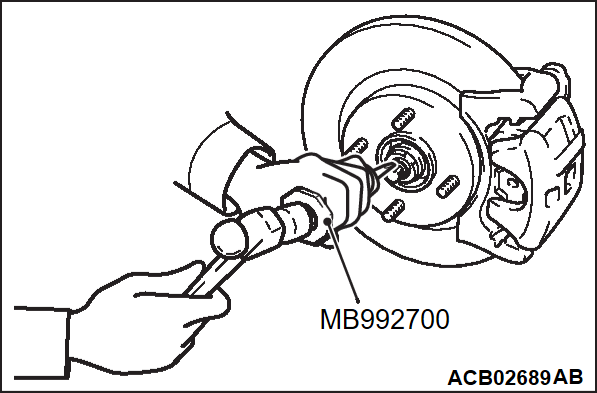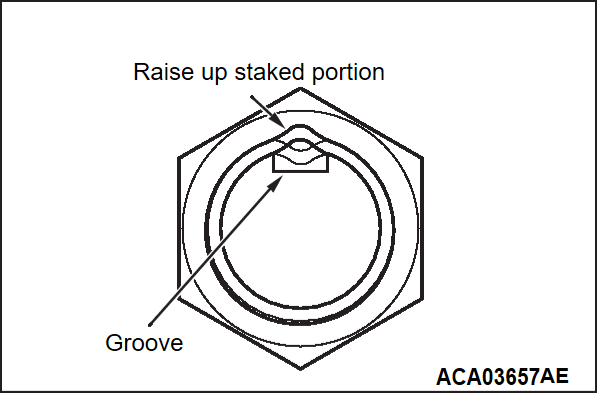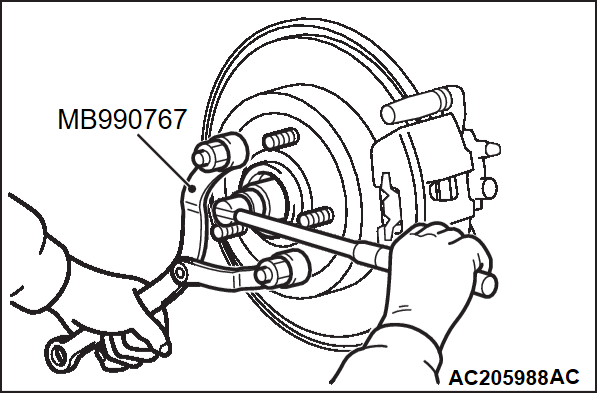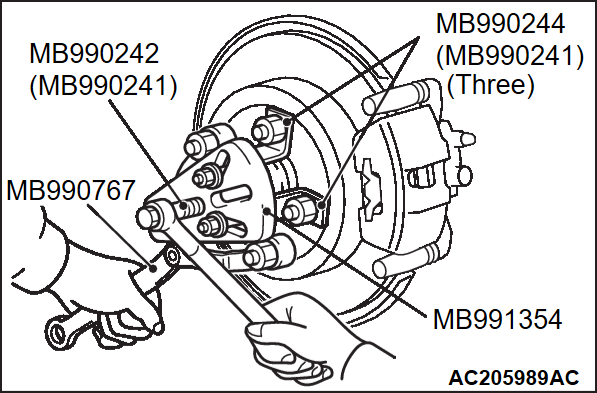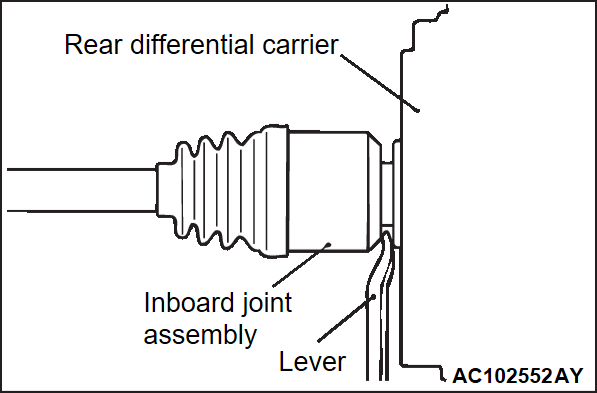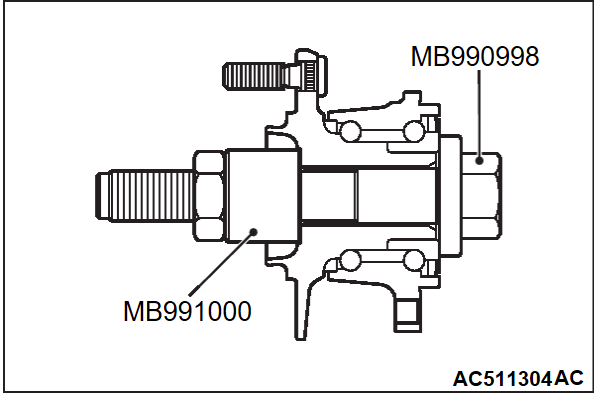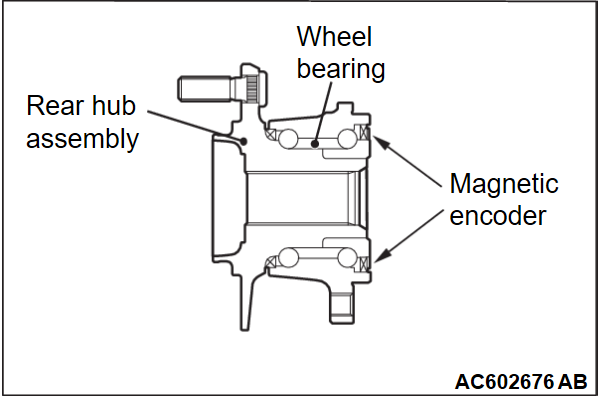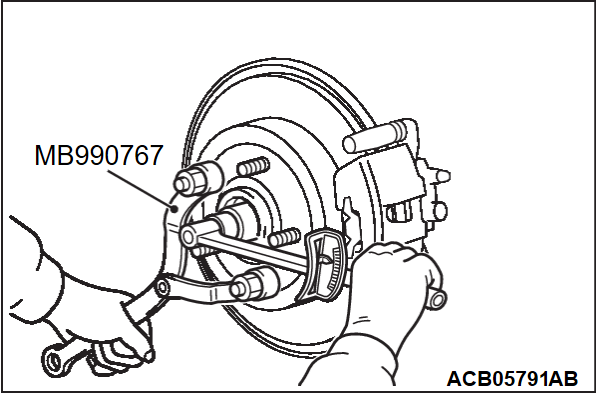REMOVAL AND INSTALLATION
| caution | The vehicle speed detection encoder collects any metallic particle easily, because it is magnetized. Make sure that the encoder should not collect any metallic particle. Check that there is not any trouble prior to reassembling it. |
Required Special Tools:
- MB992700: Lock nut chisel
- MB990767: Front hub and flange yoke holder
- MB991897 or MB992011: Ball Joint Remover
- MB990242: Puller shaft
- MB990244: Puller bar
- MB991354: Puller body
- MB991000: Spacer
- MB990998: Front hub remover and installer
REMOVAL SERVICE POINTS
<<A>> DRIVESHAFT NUT REMOVAL
1.
Set the special tool lock nut chisel (MB992700) in the groove of the driveshaft with its "UPPER" mark facing upwards. Then strike the staked portion of the driveshaft nut with the chisel and a hammer to raise up.
| caution |
|
2.
Raise up the staked portion of the driveshaft nut until it does not interfere with the shaft thread.
| caution | Be careful not to damage the thread of the driveshaft. |
3.
Use special tool front hub and flange yoke holder (MB990767) to counter the hub, and remove the driveshaft nut.
| caution |
|
<<B>> DRIVESHAFT ASSEMBLY REMOVAL
1. If the driveshaft is seized, use the following special tools to push the driveshaft out from the hub:
- Puller shaft (MB990242)
- Puller bar (MB990244)
- Puller body (MB991354)
- Front hub and flange yoke holder (MB990767)
| caution |
|
2. Use a lever to remove the driveshaft (Inboard joint assembly side) from the differential carrier.
| caution | Do not apply the vehicle weight to the wheel bearing with the driveshaft removed. If, however, the vehicle weight shall be applied to the bearing (in order to move the vehicle), use the following special tools for tightening to the specified torque [250 ± 25 N·m (184 ± 18 ft-lb)]:
|
INSTALLATION SERVICE POINTS
>>A<< DRIVESHAFT ASSEMBLY INSTALLATION
| caution | Care must be taken to ensure that the oil seal of the differential carrier is not damaged by the spline part of the driveshaft. |
>>B<< DRIVESHAFT NUT INSTALLATION
| caution |
|
1. Check the hub seated surface for damage or corrosion. Whenever solvent is used for removing the corrosion, the surface should be degreased.
2. Check that the new driveshaft nut can be turned smoothly by hand. Then tighten it until it is seated.
3.
4. Using special tool front hub and flange yoke holder (MB990767), tighten the driveshaft nut.
Tightening torque: 250 ± 25 N·m (184 ± 18 ft-lb)
5. After tightening to the specified torque, check that the nut is seated securely.
6. Use the chisel and a hammer to stake the nut until the center in the staked portion reaches the shown dimension.
7. Finally, check that the nut is not cracked at its staked portion.
![[Previous]](../../../buttons/fprev.png)
![[Next]](../../../buttons/fnext.png)


